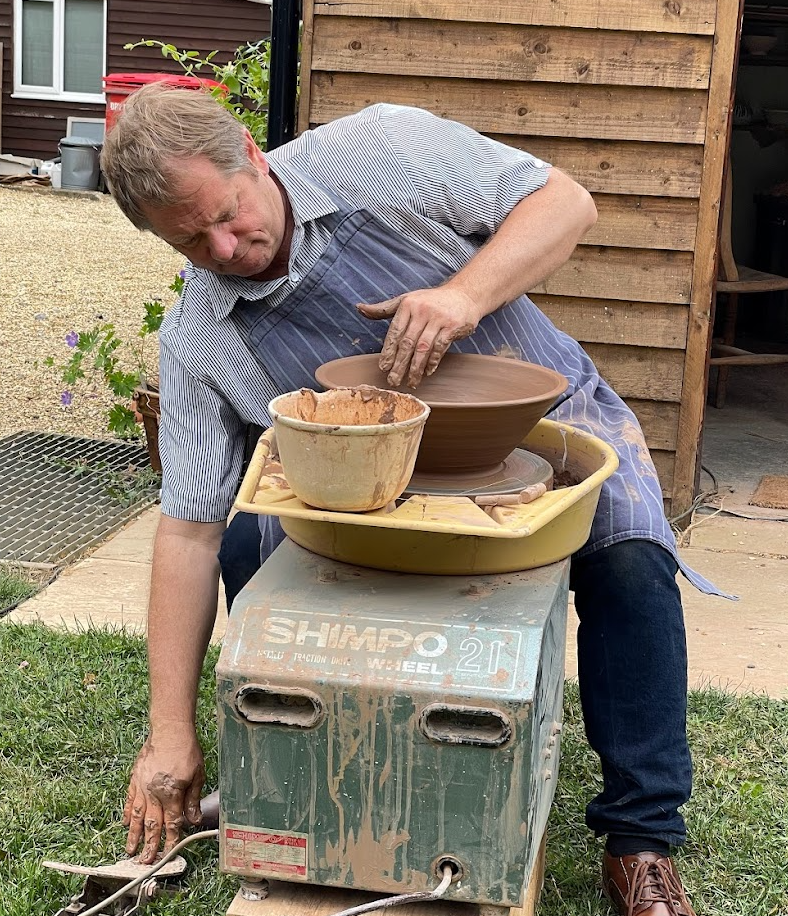
How fortunate we are to have Andrew Hazelden, an accomplished potter with a showroom now based at Hewins Wood Farm, in Bradfield. His life as a potter all started when he went to work at the pottery based in the old Smithy in the main street at Aldermaston. He worked under Alan Caiger Smith in a team of 8 potters. Alan, known nationally as a potter, was also sought after for his knowledge and writing on tin glaze and lustre-ware pottery. Andrew worked with him for 20 years, along with many apprentices who learnt the skills in this block-wood floor building with rickety stairs and kilns fired with willow left over from nearby cricket-bat willow plantations. Tin-glazed pottery is earthenware covered in lead glaze with added tin oxide.. This is white, shiny and opaque and provides a background for brightly painted decoration. It has been important in Islamic and European pottery for over a thousand years. The pottery body is usually made of red or buff-coloured earthenware and the white glaze imitates Chinese porcelain and dates from Iran in the 9th century. The decoration on tin-glazed pottery is usually applied to the unfired glaze surface by brush with metallic oxides, commonly cobalt oxide, copper oxide, iron oxide, manganese dioxide and antimony oxide to give beautiful designs. These were shown as examples and on slides. The ancient designs included hares, a symbol Of plenty, blessing and endless supplies, and Cheetahs.
Lustre ware pottery is made using silver and copper. Combined, these elements produce a gold appearance with iridescent properties, demanding a high level of skill.
Andrew now sources his clay from Italy, and although very good clay could be dug locally it would take much time in preparation. He makes the pot, decorates it and fires it at a high temperature but knows that even as little as 10 degrees off the exact temperature could spoil the glaze and therefore ruin the pot. When at Aldermaston Andrew and Alan made and decorated 25 Alhambra vases for the Pearle Assurance building in Peterborough. These are huge, 4 feet high. Only four of the original ones remain in the world, from Moorish Spain made in Malaga in the 14th century.
The Historical Society evening was rounded off with a demonstration of Andrew making an alberello, a tall pot of simple design. We watched in silence as the master proved his skill. This was followed by a demonstration of decorating a previously made pot. He kept his cool and with a brush made from squirrel hair and simple strokes impressed us all. These ancient methods of making pots all but ceased in the 17th century, only to be briefly revived in 1900 by a William De Morgan. It was in 1955 that Alan Caiger Smith set up Aldermaston Pottery and started a whole new generation Of potters including, Of course, our speaker Andrew Hazelden. Next task for him was to complete the 60 promised commemorative plates to celebrate the crowning Of King Charles IlI.


